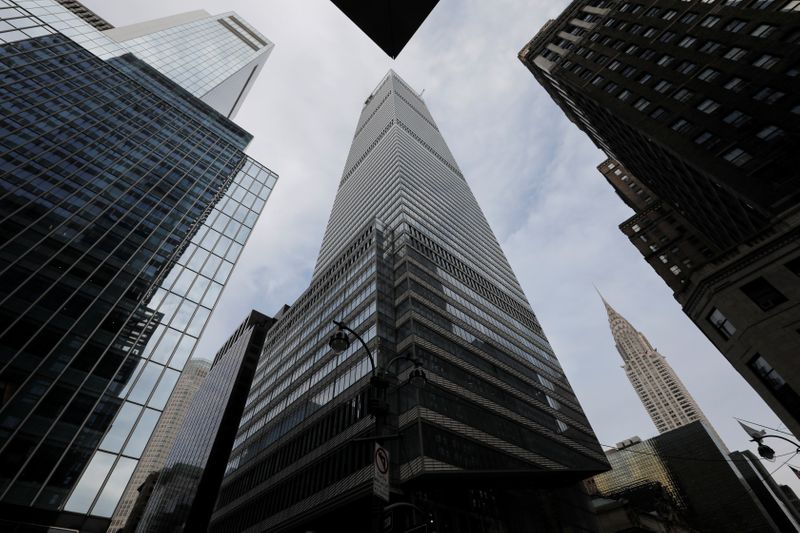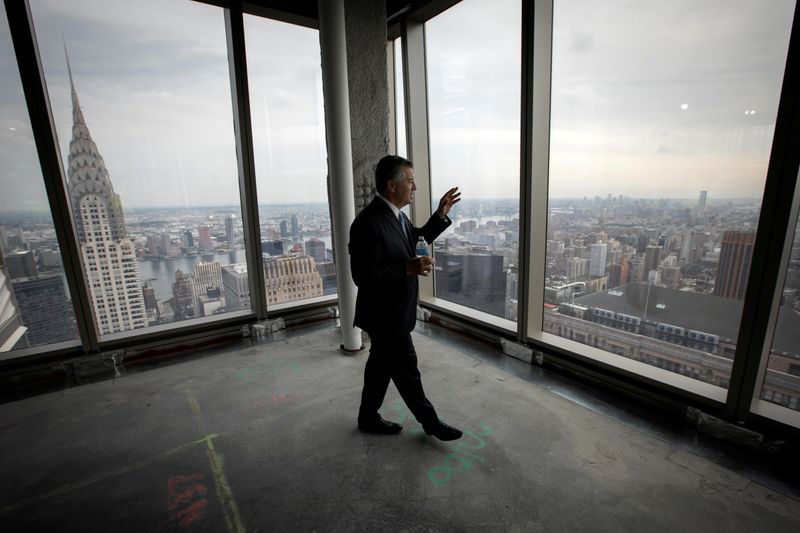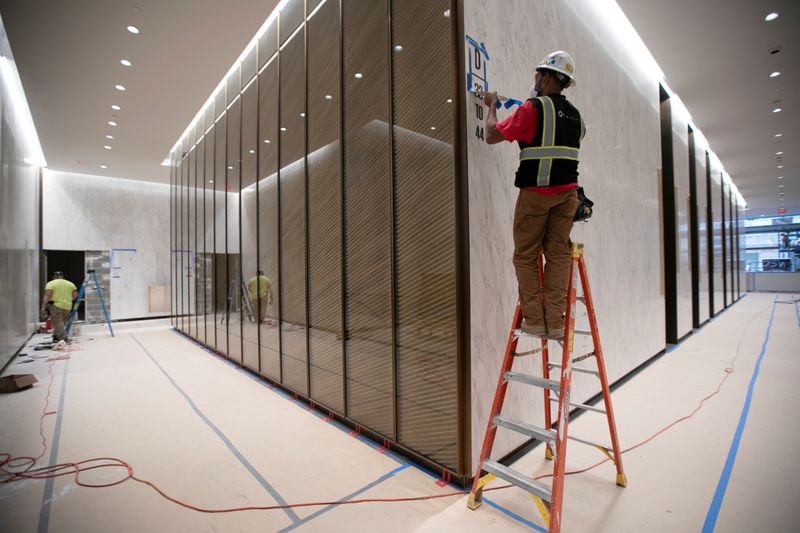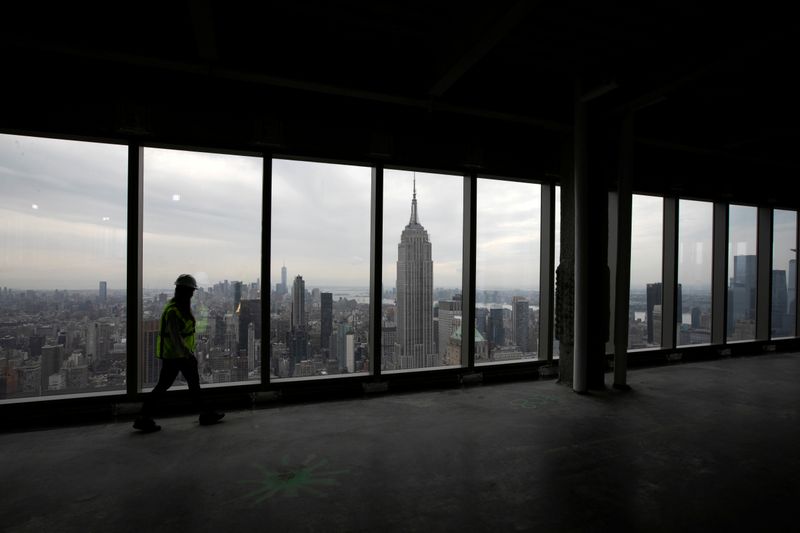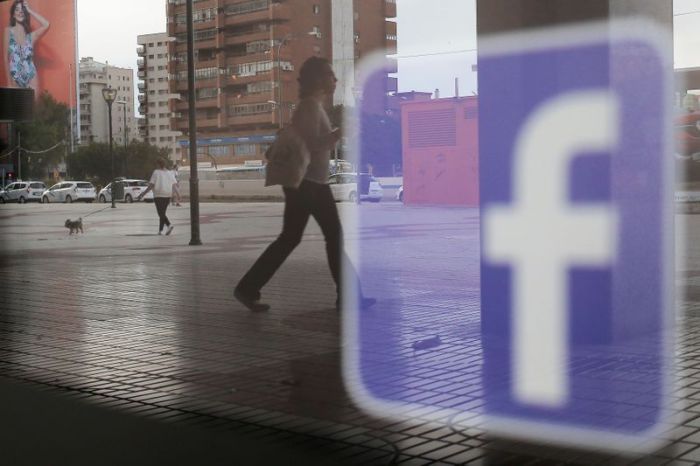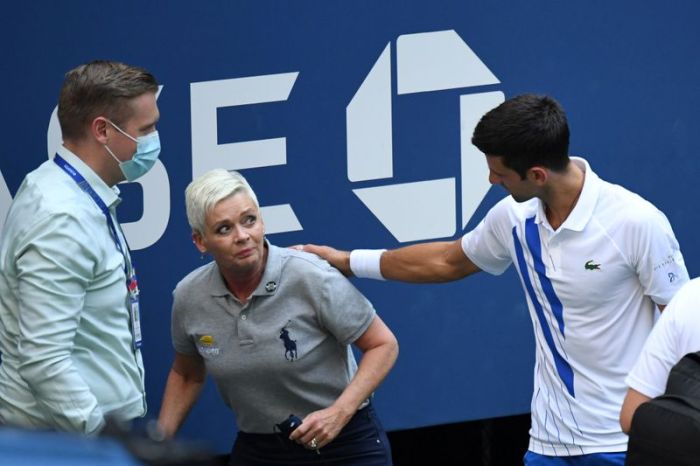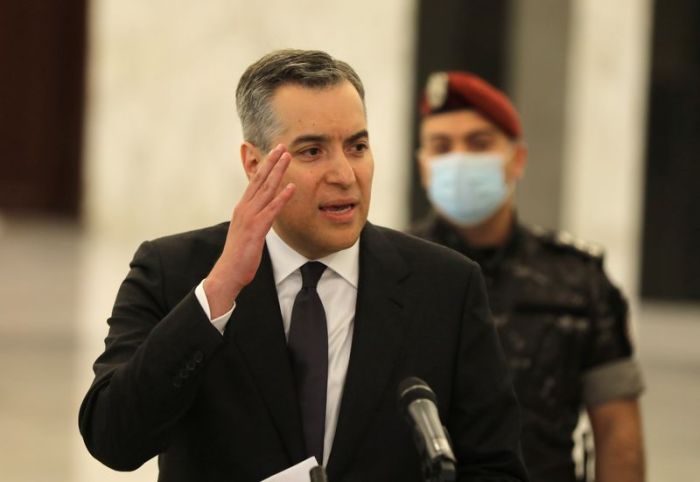NEW YORK (Reuters) – One Vanderbilt, the latest super-tall skyscraper to grace New York’s skyline, opens Monday in a socially distant ribbon-cutting ceremony as COVID-19 leaves offices and the streets of Manhattan largely barren.
The airy $3.3 billion tower adjacent to Grand Central Terminal represents a major step in city efforts to ensure that a blocks-long swath of Midtown Manhattan, where buildings on average are 85 years old, remains a premier office district.
Majority owner SL Green Realty Corp provided $220 million for new staircases and enhanced connections to the subway and suburban rail lines at Grand Central in a private partnership model the city plans to replicate in the area.
But the 1,401-foot (427-meter) One Vanderbilt, the second tallest office tower in Manhattan after One World Trade Center, opens at a time when leasing prices are in decline thanks to work from home and the city’s biggest construction boom since the 1980s.
Subletting and short-term renewals now account for more than 70% of leases as companies and landlords fight off the impact of a downturn that has given New York the highest unemployment rate, at 20%, among the biggest U.S. cities.
The average lease term at SL Green, the city’s largest office landlord, in the second quarter slid to 4.3 years from 10.1 years in the prior period, while the number of free months’ rent more than doubled to 4.5, regulatory filings show.
While One Vanderbilt is 67% leased with tenants that have taken out long-term leases at more than $100 a square foot, fear of COVID-19 has kept offices in Manhattan, the largest U.S. office market, mostly empty, which is likely to persist until a vaccine has been fully rolled out.
Tenants won’t start to move in until later this year.
The tower, which tapers as it rises above the nearby Chrysler Building to the east, has above-average floor-to-ceiling heights, addressing demand in recent years for workplaces with more sunlight.
The challenge, at least in the near term, is getting people back in the office and confident that floor configurations, along with elevators, allow ample safe space between workers.
SL Green’s shares closed up 6.3%, their biggest single-day gain in 11 weeks.
NEW VERSUS OLD
Quality space produces more value for tenants and landlords than just adding more conventional floorspace as employees tend to be more productive if their well-being is taken into account, said Dennis Frenchman, a professor of urban design at MIT who recently headed the MIT Center for Real Estate.
“That’s the calculation being made in these new buildings with super-tall ceilings and windows,” Frenchman said.
New York has added millions of square feet of column-free floorplates with floor-to-ceiling smart windows during the recent boom times, forcing landlords to spend hundreds of millions of dollars to upgrade outdated buildings.
Law firm Latham & Watkins recently left the Philip Johnson-created Lipstick Building, completed in 1986, for 1271 Avenue of the Americas, the former Time & Life Building that is 27 years older and just underwent a $600 million renovation.
Tales abound of people fleeing New York’s dense neighborhoods for the suburbs or smaller cities. Yet large-scale asset sales have not occurred that would indicate investment is pulling out and endangering Manhattan’s status as the premier global finance center and a budding U.S. hub for technology.
One Vanderbilt and Facebook’s leasing in August of the former Farley post office building adjacent to Penn Station and Madison Square Garden show there is demand for the very best workspace. But older stock face difficulties in a down market.
The market for luxury office space is not going to disappear, though it may encounter challenges ahead, said Jesse Keenan, a real estate professor at Tulane University’s School of Architecture.
“The down-market buildings will feel the heat from non-credit tenants before the topline buildings feel the heat from credit tenants,” Keenan said, referring to small businesses lacking financial strength versus well-run large corporations.
(Reporting by Herbert Lash; Editing by Alden Bentley, Leslie Adler and Cynthia Osterman)

